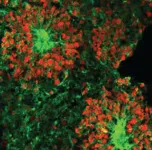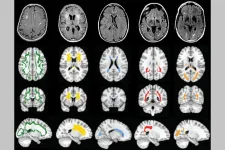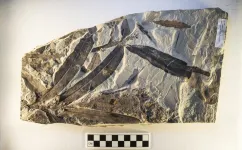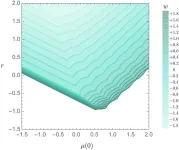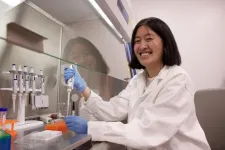(Press-News.org) LA JOLLA, CA—Microgravity is known to alter the muscles, bones, the immune system and cognition, but little is known about its specific impact on the brain. To discover how brain cells respond to microgravity, Scripps Research scientists, in collaboration with the New York Stem Cell Foundation, sent tiny clumps of stem-cell derived brain cells called “organoids” to the International Space Station (ISS).
Surprisingly, the organoids were still healthy when they returned from orbit a month later, but the cells had matured faster compared to identical organoids grown on Earth—they were closer to becoming adult neurons and were beginning to show signs of specialization. The results, which could shed light on potential neurological effects of space travel, were published on October 23, 2024, in Stem Cells Translational Medicine.
“The fact that these cells survived in space was a big surprise,” says co-senior author Jeanne Loring, PhD, professor emeritus in the Department of Molecular Medicine and founding director of the Center for Regenerative Medicine at Scripps Research. “This lays the groundwork for future experiments in space, in which we can include other parts of the brain that are affected by neurodegenerative disease.”
On Earth, the team used stem cells to create organoids consisting of either cortical or dopaminergic neurons, which are the neuronal populations impacted in multiple sclerosis and Parkinson’s disease—diseases that Loring has studied for decades. Some organoids also included microglia, a type of immune cell that is resident within the brain, to examine the impact of microgravity on inflammation.
Organoids are usually grown in a nutrient-rich liquid medium that must be changed regularly to ensure that the cells have adequate nutrition, and to remove waste products. To avoid the need for lab work on the ISS, the team pioneered a method for growing smaller-than-usual organoids in cryovials—small, airtight vials that were originally designed for deep freezing.
The organoids were prepared in labs at the Kennedy Space Station and traveled to the ISS in a miniature incubator. After a month in orbit, they returned to Earth, where the team showed that they were healthy and intact.
To examine how the space environment impacts cellular functions, the team compared the cells’ RNA expression patterns—a measure of gene activity—to identical “ground control” organoids that had remained on Earth. Surprisingly, they found that the organoids grown in microgravity had higher levels of genes associated with maturity and lower levels of genes associated with proliferation compared to the ground controls, meaning that the cells exposed to microgravity developed faster and replicated less than those on Earth.
“We discovered that in both types of organoids, the gene expression profile was characteristic of an older stage of development than the ones that were on ground,” says Loring. “In microgravity, they developed faster, but it’s really important to know these were not adult neurons, so this doesn’t tell us anything about aging.”
The team also noted that, contrary to their hypothesis, there was less inflammation and lower expression of stress-related genes in organoids grown in microgravity, but more research is needed to determine why.
Loring speculates that microgravity conditions may more closely mirror the conditions experienced by cells within the brain compared to organoids grown under conventional lab conditions and in the presence of gravity.
“The characteristics of microgravity are probably also at work in people's brains, because there's no convection in microgravity—in other words, things don't move,” says Loring. “I think that in space, these organoids are more like the brain because they're not getting flushed with a whole bunch of culture medium or oxygen. They're very independent; they form something like a brainlet, a microcosm of the brain.”
The paper describes the team’s first space mission, but since then, they have sent four more missions to the ISS. With each one, they’ve replicated the conditions from the first mission and added additional experiments.
“The next thing we plan to do is to study the part of the brain that's most affected by Alzheimer's disease,” says Loring. “We also want to know whether there are differences in the way neurons connect with each other in space. With these kinds of studies, you can't rely on earlier work to predict what the result would be because there is no earlier work. We're on the ground floor, so to speak; in the sky, but on the ground floor.”
This work was supported by funding from the National Stem Cell Foundation.
In addition to Loring, authors of the study, “Effects of microgravity on human iPSC-derived neural organoids on the International Space Station” are Jason Stein of Scripps Research; Davide Marotta, Laraib Ijaz, Lilianne Barbar, Madhura Nijsure, Nicolette Pirjanian, Ilya Kruglikov, Scott A. Noggle, and Valentina Fossati of The New York Stem Cell Foundation Research Institute; Twyman Clements and Jana Stoudemire of Space Tango; and Paula Grisanti of the National Stem Cell Foundation.
About Scripps Research
Scripps Research is an independent, nonprofit biomedical institute ranked one of the most influential in the world for its impact on innovation by Nature Index. We are advancing human health through profound discoveries that address pressing medical concerns around the globe. Our drug discovery and development division, Calibr-Skaggs, works hand-in-hand with scientists across disciplines to bring new medicines to patients as quickly and efficiently as possible, while teams at Scripps Research Translational Institute harness genomics, digital medicine and cutting-edge informatics to understand individual health and render more effective healthcare. Scripps Research also trains the next generation of leading scientists at our Skaggs Graduate School, consistently named among the top 10 US programs for chemistry and biological sciences. Learn more at www.scripps.edu.
END
Brain cells remain healthy after a month on the International Space Station, but mature faster than brain cells on Earth
Scripps Research scientists reveal microgravity’s effects on brain cells
2024-12-17
ELSE PRESS RELEASES FROM THIS DATE:
NIH grant funds study of cerebral small vessel disease
2024-12-17
Researchers at Washington University School of Medicine in St. Louis have been awarded $7.5 million from the National Institutes of Health (NIH) to investigate a form of dementia caused by cerebral small vessel disease, the second-leading cause of dementia after Alzheimer’s disease.
The grant funds the Vascular Contributions to Cognitive Impairment and Dementia (VCID) Center, which is a National Institute of Neurological Disorders and Stroke “Center Without Walls” initiative that will coordinate researchers at six sites across ...
Paranoia may be, in part, a visual problem
2024-12-17
New Haven, Conn. — Could complex beliefs like paranoia have roots in something as basic as vision? A new Yale study finds evidence that they might.
When completing a visual perception task, in which participants had to identify whether one moving dot was chasing another moving dot, those with greater tendencies toward paranoid thinking (believing others intend them harm) and teleological thinking (ascribing excessive meaning and purpose to events) performed worse than their counterparts, the study found. Those individuals more often — and confidently — claimed one dot was chasing the other when it wasn’t.
The findings, published Dec. 17 in ...
The high cost of carbon
2024-12-17
The social cost of carbon — an important figure that global policymakers use to analyze the benefits of climate and energy policies — is too low, according to a study led by the University of California, Davis.
The study, published today in the journal Proceedings of the National Academy of Sciences (PNAS), shows that current estimates for the social cost of carbon, or SCC, fail to adequately represent important channels by which climate change could affect human welfare. When included, the SCC increases to just over $280 per ton of CO2 emitted in 2020 — more than double the ...
This mysterious plant fossil belongs to a family that no longer exists
2024-12-17
In 1969, fossilized leaves of the species Othniophyton elongatum — which translates to “alien plant” — were identified in eastern Utah. Initially, scientists theorized the extinct species may have belonged to the ginseng family (Araliaceae). However, a case once closed is now being revisited. New fossil specimens show that Othniophyton elongatum is even stranger than scientists first thought.
Steven Manchester, curator of paleobotany at the Florida Museum of Natural History, has studied 47-million-year-old fossils from Utah for several years. While visiting ...
Physicists ‘bootstrap’ validity of string theory
2024-12-17
String theory, conceptualized more than 50 years ago as a framework to explain the formation of matter, remains elusive as a “provable” phenomenon. But a team of physicists has now taken a significant step forward in validating string theory by using an innovative mathematical method that points to its “inevitability.”
String theory posits that the most basic building blocks of nature are not particles, but, rather, one-dimensional vibrating strings that move at different frequencies ...
Parents’ childhood predicts future financial support for children’s education
2024-12-17
UNIVERSITY PARK, Pa. — Childhood circumstances, such as parental divorce or growing up poor, have been shown to influence health and other outcomes later in life. But does a person’s experiences in childhood also influence their future ability to provide financial support to their children?
According to a new study from a researcher from Penn State, parents who endured difficult childhoods provided less financial support to their children’s education such as college tuition compared to parents who experienced few or no disadvantages. Regardless of current socioeconomic ...
SFU study sheds new light on what causes long-term disability after a stroke and offers new path toward possible treatment
2024-12-17
A recent study from Simon Fraser University researchers has revealed how an overlooked type of indirect brain damage contributes to ongoing disability after a stroke.
The paper, published in Proceedings of the National Academy of Sciences, shows how the thalamus – a sort of central networking hub that regulates functions such as language, memory, attention and movement – is affected months or years after a person has experienced a stroke, even though it was not directly damaged itself. The findings may lead to new therapies that could reduce the burden of chronic stroke, which remains one of the leading causes of disability in the world.
“Our ...
More calories – more consumption: Individuals with and without obesity both prefer high-calories food
2024-12-17
Higher calorie foods were preferred among individuals with and without obesity despite similar taste and texture, according to a study published December 17th in the open-access journal PLOS Biology by Albino Oliveira-Maia from the Champalimaud Foundation, Portugal, and colleagues.
Eating sends signals to the brain with information about a food’s energy content, which can influence food preferences irrespective of flavor. People with obesity often have impairments in areas of the brain where dopamine ...
Astrophysics: Mystery of the ‘missing’ binary stars solved
2024-12-17
An international team of researchers led by PD Dr Florian Peißker has found the first binary star in the immediate vicinity of the supermassive black hole Sgr A* (Sagittarius A star) at the centre of our galaxy. Although it is known that most stars in the universe do not form alone, so far there are only five confirmed binary stars at a greater distance from the black hole. None of the systems are so close. The researchers assume that the binary star system they found, named D9, will merge into a single star in the near future. The discovery was published in Nature Communications under the title ‘A binary ...
Peptide-guided nanoparticles deliver mRNA to neurons
2024-12-17
Penn Engineers have modified lipid nanoparticles (LNPs) — the revolutionary technology behind the COVID-19 mRNA vaccines — to not only cross the blood-brain barrier (BBB) but also to target specific types of cells, including neurons. This breakthrough marks a significant step toward potential next-generation treatments for neurological diseases like Alzheimer’s and Parkinson’s.
In a new paper in Nano Letters, the researchers demonstrate how peptides — short strings of amino ...
LAST 30 PRESS RELEASES:
NTP-enhanced lattice oxygen activation in Ce-Co catalysts for low-temperature soot combustion
Synergistic interface engineering in Cu-Zn-Ce catalysts for efficient CO2 hydrogenation to methanol
COVID-19 leaves a lasting mark on the human brain
Scientists use ultrasound to soften and treat cancer tumors without damaging healthy tissue
Community swimming program for Black youth boosts skills, sense of belonging, study finds
Specific depressive symptoms in midlife linked to increased dementia risk
An ‘illuminating’ design sheds light on cholesterol
Who is more likely to get long COVID?
Study showcases resilience and rapid growth of “living rocks”
Naval Research Lab diver earns Office of Naval Research 2025 Sailor of the Year
New Mayo-led study establishes practical definition for rapidly progressive dementia
Fossil fuel industry’s “climate false solutions” reinforce its power and aggravate environmental injustice
Researchers reveal bias in a widely used measure of algorithm performance
Alcohol causes cancer. A study from IOCB Prague confirms damage to DNA and shows how cells defend against it
Hidden viruses in wastewater treatment may shape public health risks, study finds
Unlock the power of nature: how biomass can transform climate mitigation
Biochar reshapes hidden soil microbes that capture carbon dioxide in farmland
Reducing saturated fat intake shows mortality benefit, but only in high-risk individuals
Manta rays create mobile ecosystems, study finds
Study: Mixed results in using lipoic acid to treat progressive multiple sclerosis
Norbert Holtkamp appointed director of Fermi National Accelerator Laboratory
New agentic AI platform accelerates advanced optics design
Biologists discover neurons use physical signals — not electricity — to stabilize communication
Researchers discover that a hormone can access the brain by hitchhiking
University of Oklahoma researcher awarded funding to pursue AI-powered material design
Exploring how the visual system recovers following injury
Support for parents with infants at pediatric check-ups leads to better reading and math skills in elementary school
Kids’ behavioral health is a growing share of family health costs
Day & night: Cancer disrupts the brain’s natural rhythm
COVID-19 vaccination significantly reduces risk to pregnant women and baby
[Press-News.org] Brain cells remain healthy after a month on the International Space Station, but mature faster than brain cells on EarthScripps Research scientists reveal microgravity’s effects on brain cells
